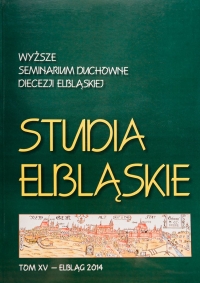
We kindly inform you that, as long as the subject affiliation of our 300.000+ articles is in progress, you might get unsufficient or no results on your third level or second level search. In this case, please broaden your search criteria.


In this paper, the origin and history of the counts of Krk – the Frankopans are given in detail, as well as a more detailed history of the Brinje Frankopan lineage, which ended the history of this famous Croatian noble family. This paper highlights one part of the lesser-known Frankopan, especially Glagolitic, heritage of the town of Brinje and its region, which was the residential centre of the most powerful counts of Krk, later Frankopan: Count Anž (Ivan) V. and Count Mikula (Nikola) IV. and which was later managed by the Brinje, i.e. Tržac, branch of the Frankopans. The figure of Countess Jelža (Elizabeta), the widow of Count Bartol IX, the founder of the Brinje lineage and the mother of Count Anž (Ivan) VIII, is especially outlined, as well as the work of Count Anž (Ivan) VIII. of Brinje, otherwise a controversial historical figure. He often did not choose the means and method in the struggle for his property and survival, however, he did leave a significant mark in the Glagolitic documents of the 15th century. Unfortunately, Count Anž (Ivan) VIII is overlooked in the lexicographical literature, which is certainly a great pity. Also shown is the Glagolitic inscription from the grave of Count Matijaš Čubranić, who was in the service of Count Anž (Ivan) VIII, as well as the Glagolitic documents of the Augustinian monastery of St Mary in Brinje and the Pauline monastery of St Nicholas at Gvozd near Modruš. This provides a new perspective of Count Anž (Ivan) VIII, as well as of Brinje, today somewhat forgotten by the public as an important centre of the old Frankopan state and one of the centres of Croatian Glagolitic literacy.
More...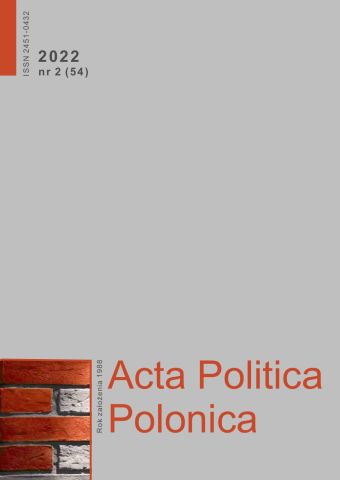
Estonia is one of the fifteen states created as a result of the collapse of the Soviet Union, which introduced such effective reforms that it is now a highly developed, economically and socially Western democracy. Currently, Estonia is at the forefront of post-Soviet and former satellite countries in terms of freedom from corruption, democratization, the level of education, and building a digital society. The main aim of the article was to answer the question concerning the social, political, and economic effects of reforms implemented in Estonia after the country became independent from Moscow. By comparing relevant indicators, the implications of these reforms were presented against the background of other former Soviet republics and Central and Eastern European states. The article also presents the historical determinants of the proWestern orientation of Estonia and its inhabitants. Without social support for integration with Western Europe, it would be impossible to carry out a successful transformation. Among the historical factors, the centuries-old influence of Western European, especially German, culture and economy had the greatest impact on the manner and quality of the reforms carried out in Estonia. The research shows that Estonia is the least affected by corruption and the most democratic country in the post- Soviet area. However, in terms of the quality of education, the country ranks first not only in the group of post-Soviet countries, but also in the whole of Europe. On the other hand, in terms of building the information society and e-state, Estonia is a world leader and is presented as an example to other countries.
More...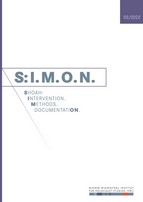
By combining microhistorical and regional approaches with theoretical findings from fascism, Holocaust, and genocide studies, this chapter examines the interaction between the Nazi, Ustaša and Arrow Cross movements in the city of Osijek. By analyzing the ideologies and praxis of the three fascist movements, this paper demonstrates that the future they wanted to build remained vague, contested, and contradictory despite many shared goals and enemies. Instead of bringing the three fascist movements together, antisemitism became a tool of competitive nation-building which contributed to the failure to create a genuinely transnational fascist front in a single city. Determining the pace of genocidal destruction became an instrument in the competitive fascist-elite-building. By relying on the concept of “genocidal consolidation”, this chapter argues that the Holocaust in Osijek became one of the primary means in the attempted consolidation of power by one fascist group at the expense of the other. Attempts to neutralize rival fascist elites in the struggle for political dominance on the regional level brought unintended consequences of significantly delaying the deportations of Jews of Osijek compared to the cities in the Independent State of Croatia.
More...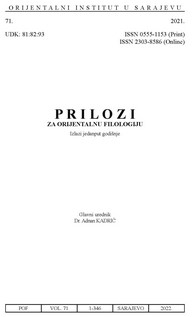
Šejhzade es-sejjid Muhamed Seid-efendi held the office of the mullah of Sarajevo on four separate occasions, which was unprecedented until his time. He held this duty for about five years and, in a political sense, his term in office represented one of the most difficult periods of the Empire and the eyelet of Bosnia. During the career of Šejhzade at the end of the eighteenth and the beginning of the nineteenth century in Belgrade and Sarajevo, the political and social events were at a high level and this undoubtedly enabled him to play an important role in political decisions made in those cities. This paper mainly focuses on the period of Šejhzade’s jurisdiction in Sarajevo, to the extent permitted by the available sources. The process of his appointment in Sarajevo, his experiences with the central administration during the extension of his period in the office, his desire to remain permanently in Sarajevo, the family relationships which he established in the city, and his relationships with other representatives of the ulema in Sarajevo are the main subjects of this paper. This work tries to contribute to the study of political factions and problems among the social strata of Sarajevo and the eyalet of Bosnia in the mentioned time frame.
More...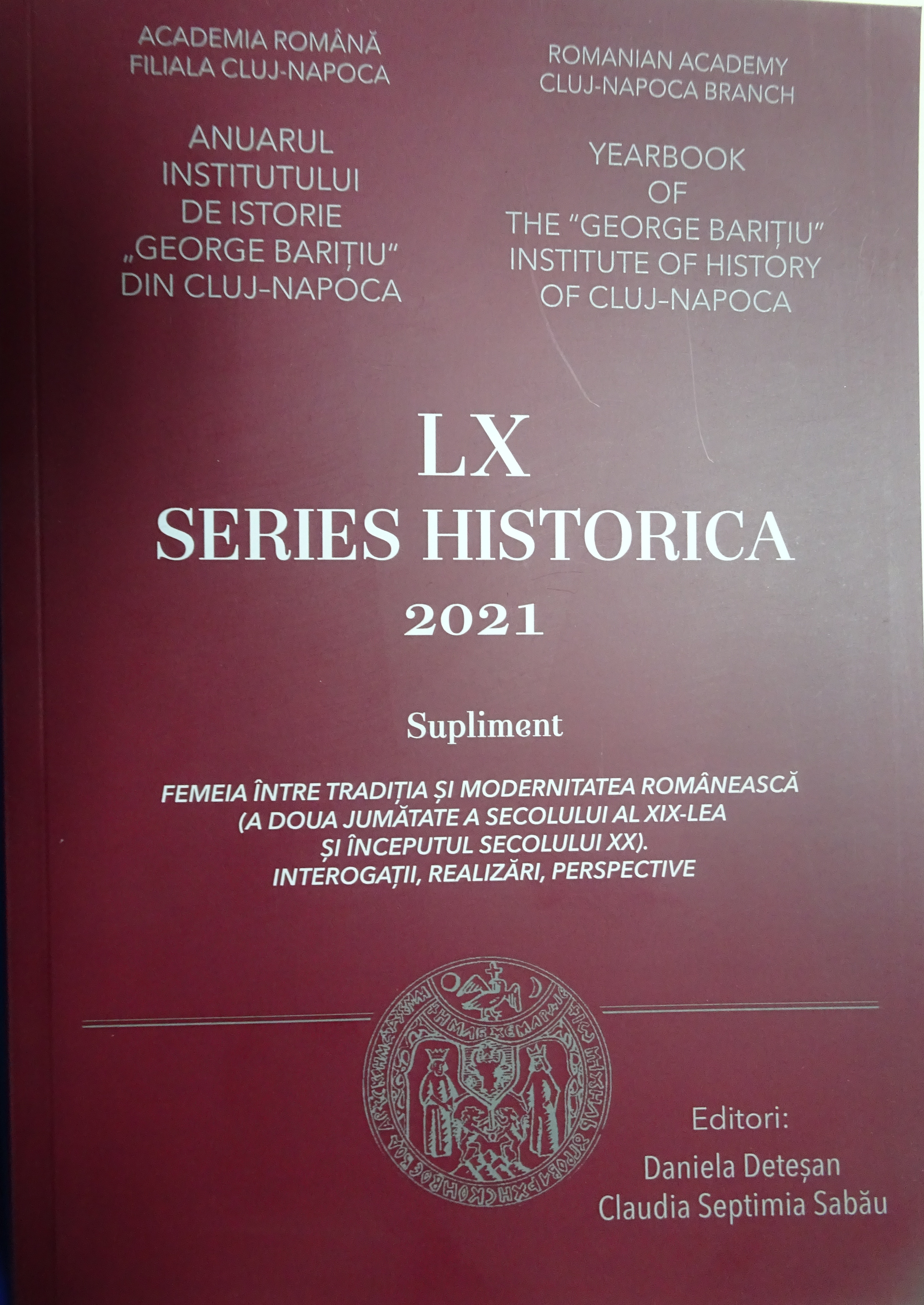
The teacher Virginia Grivase (1883-1950) is a special figure in the circles of intellectuals in Nǎsǎud, at the beginning of the 20th century. After having completed her studies in Nǎsǎud, and continued in Dej and Blaj, she was a teacher at the school in Tiha Bârgǎului and Nepos (currently villages in Bistrița-Nǎsǎud County) for more than two decades. Documents from her personal collection, kept at the Bistrița-Nǎsǎud County National Archives Service, but also from other funds and collections, as well as her literary activity (poems and essays published in magazines) prove that Virginia Grivase was not just a teacher. The friendly relationship with the writer Liviu Rebreanu and her personification in the novel „Ion” under the pseudonym Virginia Gherman confirms the above statement. This study has a double aim. On the one hand, by reconstructing the biography of this „forgotten writer”, as Teodor Tanco names her, we aim to present some aspects regarding the place, role and status of the educated woman in the society of Nǎsǎud at the beginning of the 20th century. On the other hand, we aim to find the answer to the following question: was Virginia Grivase the prototype of the Romanian woman from Transylvania, emancipated through education, or not?
More...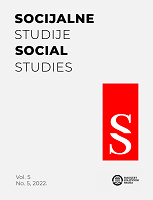
Dimitrije Mitrinović was the ideologist of “Young Bosnia” and thought leader of the Yugoslav youth movement in the first decades of the 20th century, and the proponent of the integrationist cultural ideology. He crosses a developmental thought process from ethnic nationalism to world Panhumanism and cosmopolitanism. The primordial unity of religions is taken as an instrument of uniting humanity. In the South Slavic framework, being on to Pan-Slavism, he attributes to Sarajevo and its component of Islam the role of the cultural center for bringing together and uniting spiritual and cultural differences.
More...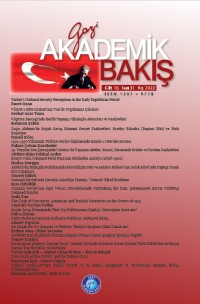
Disasters such as earthquakes, fires, famine, locust invasions and cholera caused unfortunate disasters in Malatya in the last quarter of the 19th century. In addition to all these, the immigrant and Armenian question has deepened the issues. Each devastating event triggered another disaster. Although the issues were tried to be resolved with local measures at the beginning, these measures were not sufficient. Problems were tried to be solved with the joint aid of the state and the people. The Ottoman Empire has acquired a number of principles while settling the refugees. The main purpose of these principles is to provide food for immigrants. An order has been established in which they can provide their salaries and shelter within the framework of humanitarian aid. The black market became widespread with the increase in demand for foodstuffs during the war years, the decrease in production and the cessation of imports as a result of the closure of transportation routes. The state has made intensive efforts to provide the necessary nutrients and basic consumer goods for the feeding of the poor people, the Army and civil servants, and to prevent price increases. In order to combat speculation, basic consumption items have been pledged.Cords and lazaretto were opened to combat the cholera epidemic, and the rest of the food was met. Due to the magnitude of the damage and financial loss in the earthquake, it was decided to collect aid for the victims of Malatya in all Ottoman provinces in order to heal the wounds of the disaster victims. While the people of Malatya were going through difficult times, they showed a good example of the fusion of the state and the nation, and carried out contractual activities with the state in needed areas.
More...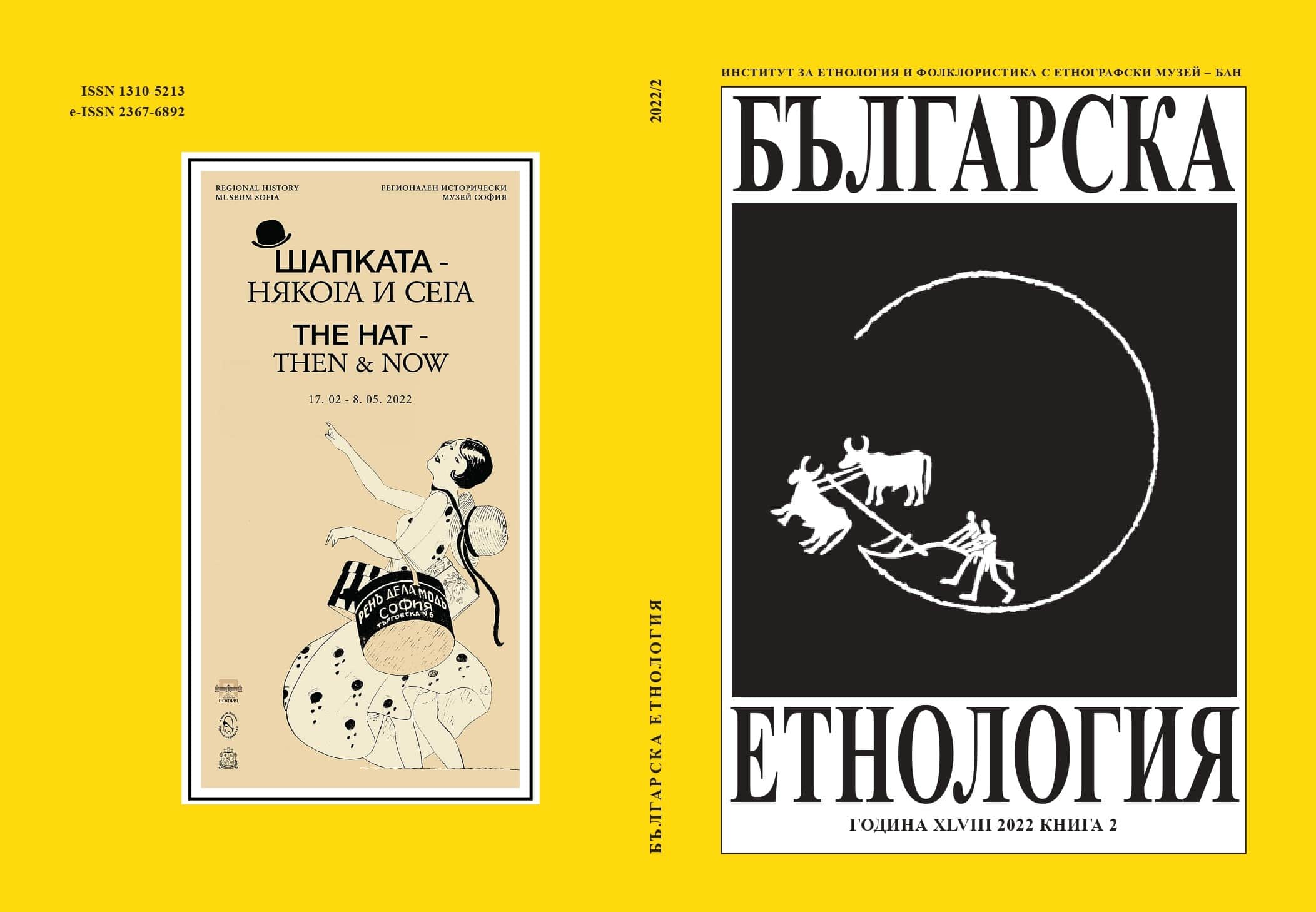
The main goal of this study is to establish the nature and specifics of craftsmanship carried out in Kyustendil and its surroundings during the period of the Bulgarian National Revival. The analysis of the available source materials shows that during that period, in the development of craftsmanship in the region significant changes occur, which become the basis for the establishment of more progressive production relations in this area of the regional economy. However, the implementation of these changes is accompanied by a number of opposing factors that determine the slow pace of their implementation. This is the main reason why the establishment of these relations could not take place during the historical epoch under study.
More...
Mining cities are the regions where the spaces are produced, and their uses are privatized due to the ongoing coal production and production-based industrial activities underground and ground. The daily life of the mining city, as an area where the problems and solutions related to the spatial structure can be read, points to the new special use of space. The increase in the search for new markets for coal production with the Industrial Revolution in the 19th century, brought foreign capital to make investments in Zonguldak, where hard coal reserves exist. Zonguldak, which has been transformed into a multinational structure with increased foreign capital investments at the beginning of the 20th, refers to everyday life dependent on the practice of coal production within the framework of the mining policies and technological conditions in that period. Everyday life based on coal production brings not only mining and transportation operations, but also solutions for accommodation, education, production, health, and transportation that will respond to the needs of those involved in production. As a result of the intervention of foreign and domestic capital in the space for coal production, and the use of the space with these interventions provides information about lived space. As a way of accessing the truth of the living space; exploring everyday life and interpreting this analysis through the theorists and concepts that contribute to the daily literature constitute the method of the study. In this study, the daily life of the Üzülmez Valley and its colonial structures, where production is ongoing between 1850-1926 with the hybrid production understanding of foreign and national capital, is analysed through the concepts developed by the theorists Lefebvre, De Certeau and Bourdieu who contributed to the daily life literature. The study on the daily life of the Üzülmez Valley at the beginning of the 20th century revealed the role of coal production practice in shaping the urban space and life, through the concepts of strategy, tactics, rhythm analysis and habitus, which refer to daily life. The city, which was divided into periods based on the production policies of the powers, brought along the rhythms of use due to its spatial organization, and the uses that create these rhythms were examined under the headings of accommodation, transportation, production, education, and health, which include the spatial solutions of daily life. Finally, in the habitus of the mining city, which is formed with new uses within the framework of production habits; the strategies developed for the continuity of coal production and the rhythms of the use of space in the daily life of the city are graphed in the traces of the tactics produced against the strategies.
More...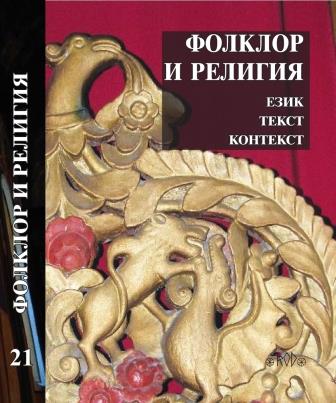
Entering the global world of the XXI century, we are increasingly aware of the need to return to the roots, to our original nature, to not be left alone and being lost in the new global reality. In this report my aim is to identify and highlight the intangible heritage of Botevgrad, which is endangered and, what is nowadays a part of our way of life and our faith, and traditions came from grandmothers. The report is based on comparison and analysis, raises questions and is an attempt to preserve the rich intangible heritage of Botevgrad.Entering the global world of the XXI century, we are increasingly aware of the need to return to the roots, to our original nature, to not be left alone and being lost in the new global reality. In this report my aim is to identify and highlight the intangible heritage of Botevgrad, which is endangered and, what is nowadays a part of our way of life and our faith, and traditions came from grandmothers. The report is based on comparison and analysis, raises questions and is an attempt to preserve the rich intangible heritage of Botevgrad.
More...
Throughout prehistory, the territories of today’s counties of Shtip and Karbinci as a result of favorable living conditions were inhabited by humans. Of course, despite the well-being of life in these territories, there were various types of dangers that endangered the lives of people and the material goods they created. Therefore, it was necessary to organize protection and rescue, which was performed through the use of various methods and ways. In this way man and his material goods managed to fully or partially withstand the challenges created by the dangers they faced in this time period.
More...
Building roads has been indispensable for civilizations from past to present. The geographies and civilizations where the roads were built played an important role in the construction of the road, ensuring its continuity and gaining an identity. The aim of this study is to reveal the construction process of the Kırkdilim road, which has been under construction for more than half a century, how it turned into a tainted road in the historical process, and the reflections of the political decisions taken in the field. For this purpose, field studies were carried out at intervals between 2018-2022. During these studies, interviews consisting of open-ended questions were conducted with the local people. The results of the research revealed that the effect of the geological and geomorphological structure in the area, technical inadequacies and political decisions are among the biggest reasons why the Kırkdilim road could not be completed for more than half a century in the historical process. Due to the slope conditions of the Mesozoic limestones and conglomerate formations in the area, their mobility is high. Tunnels and roads built in the area in previous years have become unusable due to landslides and rockfalls, and many fatal accidents have occurred. The historical process, especially the reflections of the political decisions taken, has made the Kırkdilim road a tainted place. The experiences, narratives and stories of the people who use this tainted area have been passed down from generation to generation. Today, the area is a tainted place both in terms of local people, drivers and passengers using the area, aesthetically and archaeologically, geographically and politically. The issue of how to manage this taintining is the most basic problem that needs to be addressed.
More...
The Archaeological and Historical Museum Terracotta is a local museum institution opened to the public in 2006. In the modern culture, the term museum has more meanings, gradually surpassing its original experience as a kind of sanctuary and becoming part of a market industry that is defined as a post-museum. This is how the Terracotta Museum can be defined, as a post-museum with clearly defined agendas, a different approach to visitors and intensively involved in other areas of social living. The permanent museum exhibition presents over 300 important archeological objects from several archeological sites located on the territory of the municipality of Vinica. As the name of the museum suggests, the emphasis is on the presentation of the terracotta “icons” from the archeological site Vinićko Kale, but visitors have the opportunity in chronological order to get acquainted with the cultures and civilizations that left a mark on the territory of the municipality of Vinica in the time period of 5000 B.C., until the XII century. In addition, a small part of the permanent exhibition is singled out, as an illustration of the rich material culture presented at the museum.
More...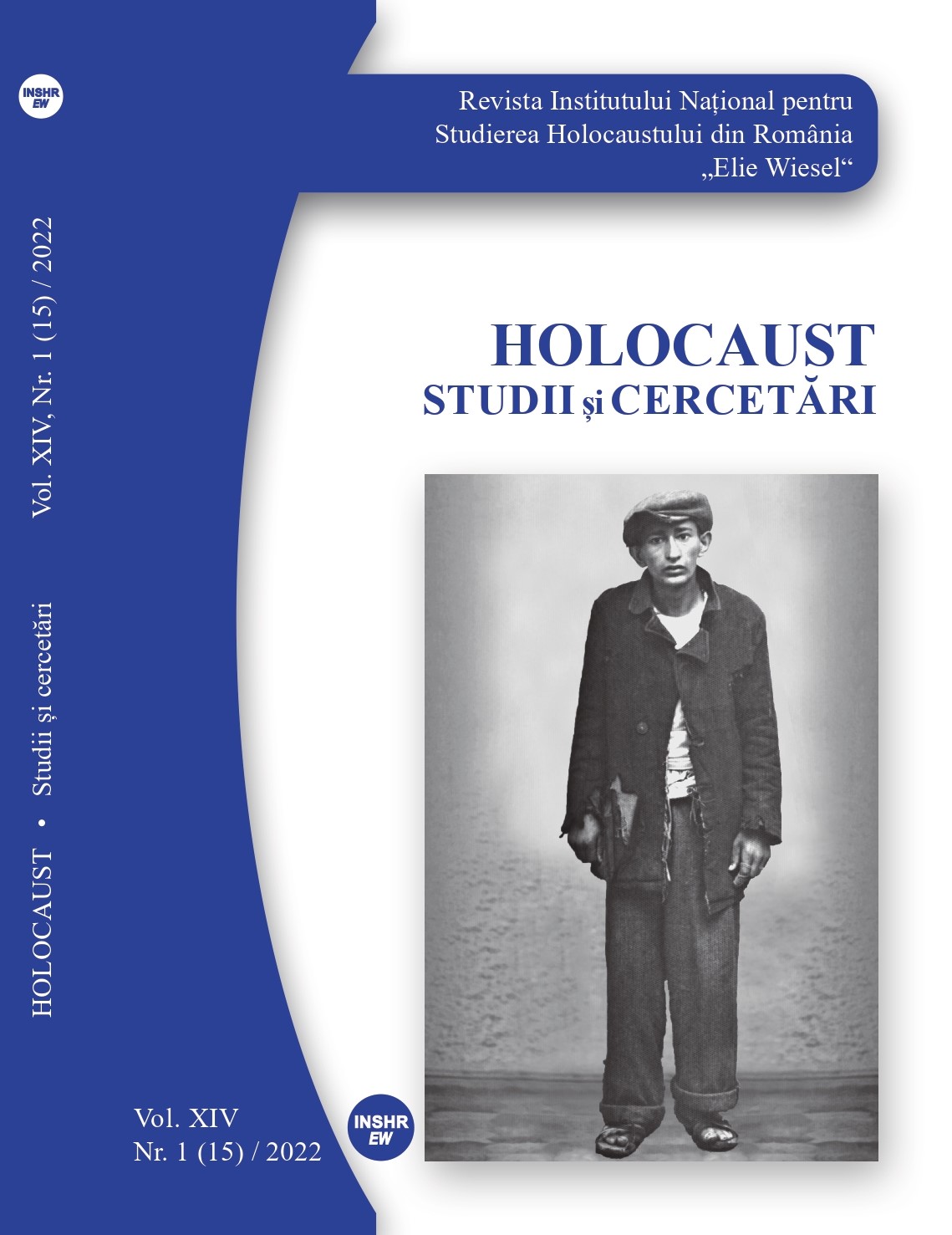
Stationed in Iași during the Pogrom of 1941, later advancing into Bessarabia and crossing the Dniester River towards Odessa, the 14th Infantry Division supervised and coordinated the advance of its units through regions where many localities were home to large Jewish communities. This study aims to analyze the way in which this large military unit of the Romanian Army trained and mobilized its own units immediately after the withdrawal from Bessarabia and Bukovina in the summer of 1940, until the start of the Romanian-German offensive. Another aim is to reconstruct, by using the orders received and issued by the14th Division, the criminal urges or encouraging silences that enabled the destruction of the Jewish communities in Bessarabia and Bukovina.
More...
Starting with the first performances in 1944, new Jewish theatre companies created works that courageously approached the recent trauma for large audiences. The outstanding IKUF(Yiddisher Kultur Ferband) Theatre led this cultural movement and put the artistic foundations to what would become the Jewish State Theatre (Teatrul Evreiesc de Stat – TES) in 1948, in a difficult and confusing political moment. Its short-lived existence left a legacy that had long-term effects on the intricate transformations of the Jewish theatre in Romania.
More...
The small Jewish communities from the seven villages that make up nowadays the rural commune of Vad – Bogata de Jos, Bogata de Sus, Calna, Cetan, Curtuiușu Dejului, Vad, and Valea Groșilor – were brutally knocked out during the Holocaust, as were all the Jewish communities from North-Western Romania, that is. from Northern Transylvania. This author has already shown, in a study concerning the village of Bogata de Sus, published in 2020, that the atrocities of the Holocaust scarred the collective memory of one of the commune’s villages and the individual memories of the farmers from that village. The current research has carried on and enlarged that study by laying stress on how the Holocaust itself and its local victims are still present in the memory of the inhabitants of all the villages from the commune of Vad, as well as by analyzing the means by which the authorities and public institutions of postwar Vad, down to the present day, have become involved in actions meant to preserve and cultivate the memory of the local victims of the Holocaust.
More...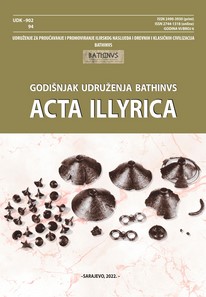
The upper course of the Drina river was a part of the Roman province of Dalmatia – more precisely it was located in the eastern part of the province. The mentioned territory, which in present-day Bosnia and Herzegovina includes towns Goražde and Foča as well as smaller villages, belonged to the municipal unit whose center was in the village of Komini near Pljevlja – Montenegro. This administrative unit is known as Municipium S(...?). There is no mention of this administrative unit in the written source material. Accordingly, epigraphic monuments are the main sources from which the past of this administrative unit can be studied. They mention elements that testify to the administrative organization. As there is no information in the written source material, reconstruction can only be partially done. Many questions, starting with the name of the administrative unit, are still not clarified.
More...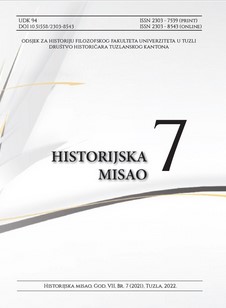
A region's socioeconomic and political conditions greatly influence the interaction between human settlements and natural landscapes. The relationship between man and landscape is, to a great extent, evident in regions where economic development relies on mineral sources. In that regard, the city of Tuzla in Bosnia and Herzegovina offers a unique narrative about the value of salt as an administrative and economic tool. In addition, regime changes conditioned the formation of an industrial network that emerged around salt and coal deposits. The coal and salt industries, thus, gained a leading role in Tuzla's economic development between 1884 and 1992. After 1992, war destruction and changes in society contributed to the transition from secondary to the tertiary economic sector. The resulting high unemployment rate became the primary problem. Therefore, the significance of the buildings and sites, which make up the historically and technologically connected network of Tuzla's industrial heritage, has not yet been determined. Guided by international principles for the valorization of cultural and historical heritage, this article aims to identify industrial heritage in the municipality of Tuzla and holistically evaluate their cultural and historical significance for preserving the identity of its population.
More...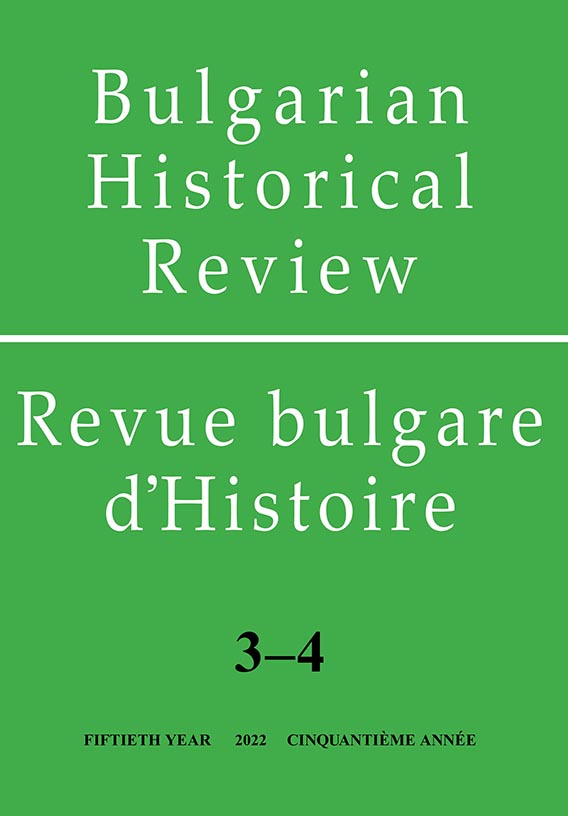
The study aims to outline the main characteristics of the farm of a well-to-do peasant from the province of Rumeli in the early seventeenth century and to tell his family story. The first part of the study analyzes the inheritance inventory (tereke defter) of the properties of Tsono, son of Todor from the village of Dobroslavtsi in the kaza of Sofia, left to his heirs after his death. The microeconomics of the farm he created is reconstructed. Its potential for providing surpluses from agriculture and animal husbandry and for the formation of the property status of the family is analyzed. The second part of the study, based on information from documents (hüccets) registered in the kadı court records of Sofia from 1617, examines aspects of family history, focusing on the murder of the said peasant, organized by his wife and carried out by two of his countrymen. The criminal and spiritual aspects of the crime are analyzed, the ways and means that existed during the epoch for its avoidance are outlined.
More...